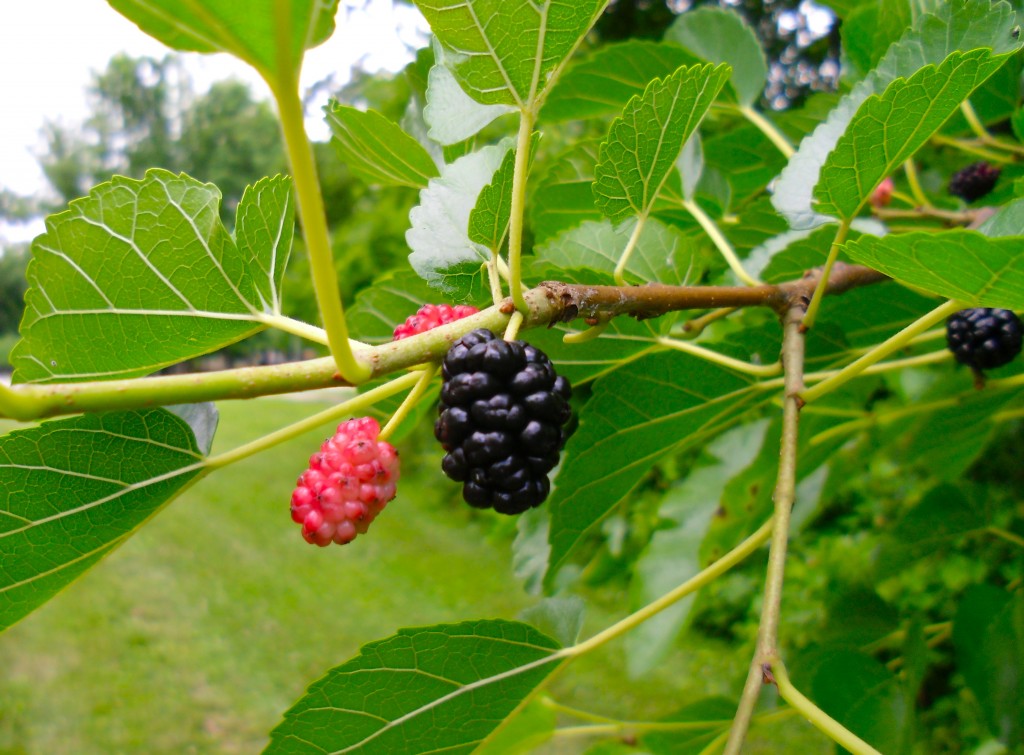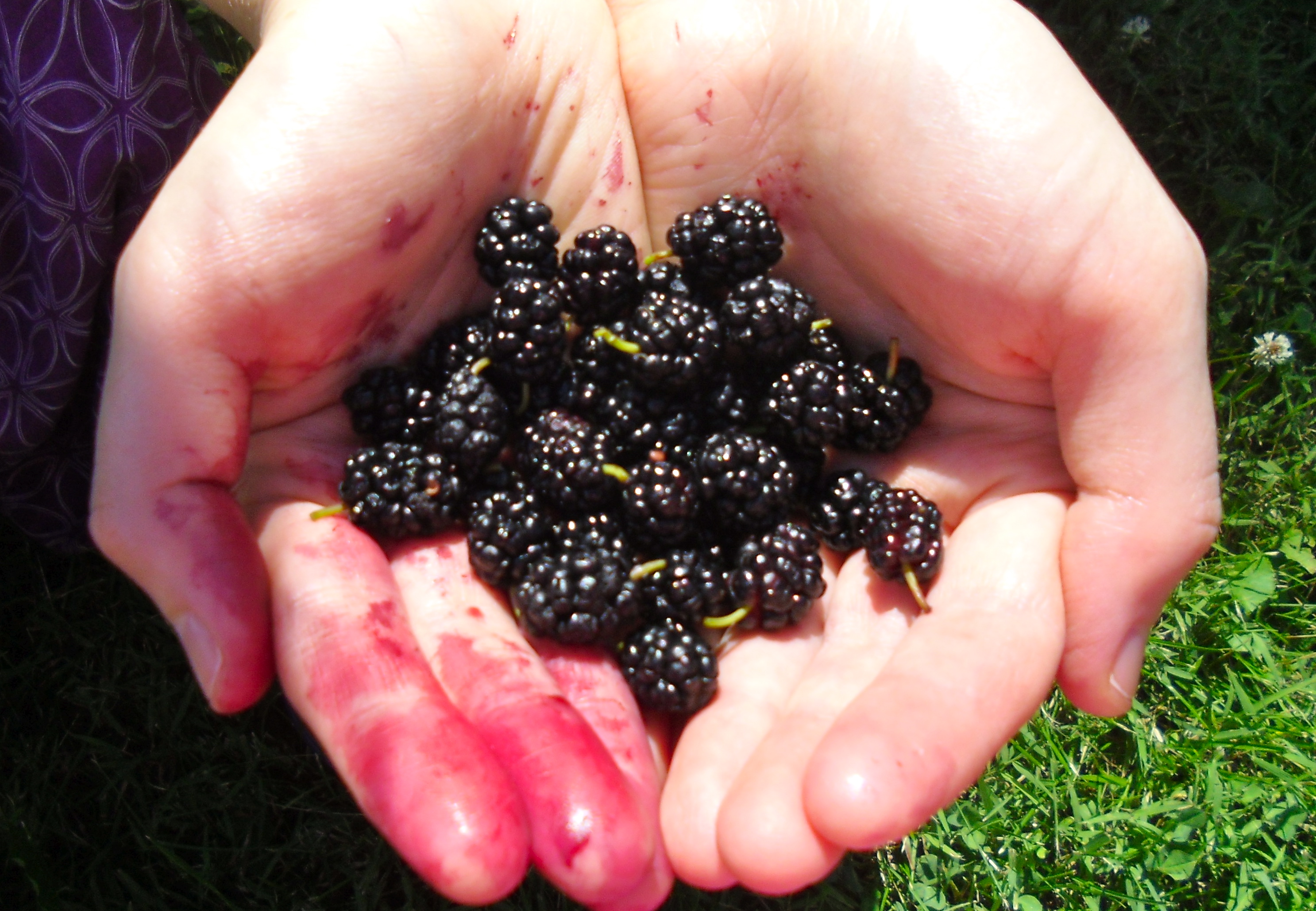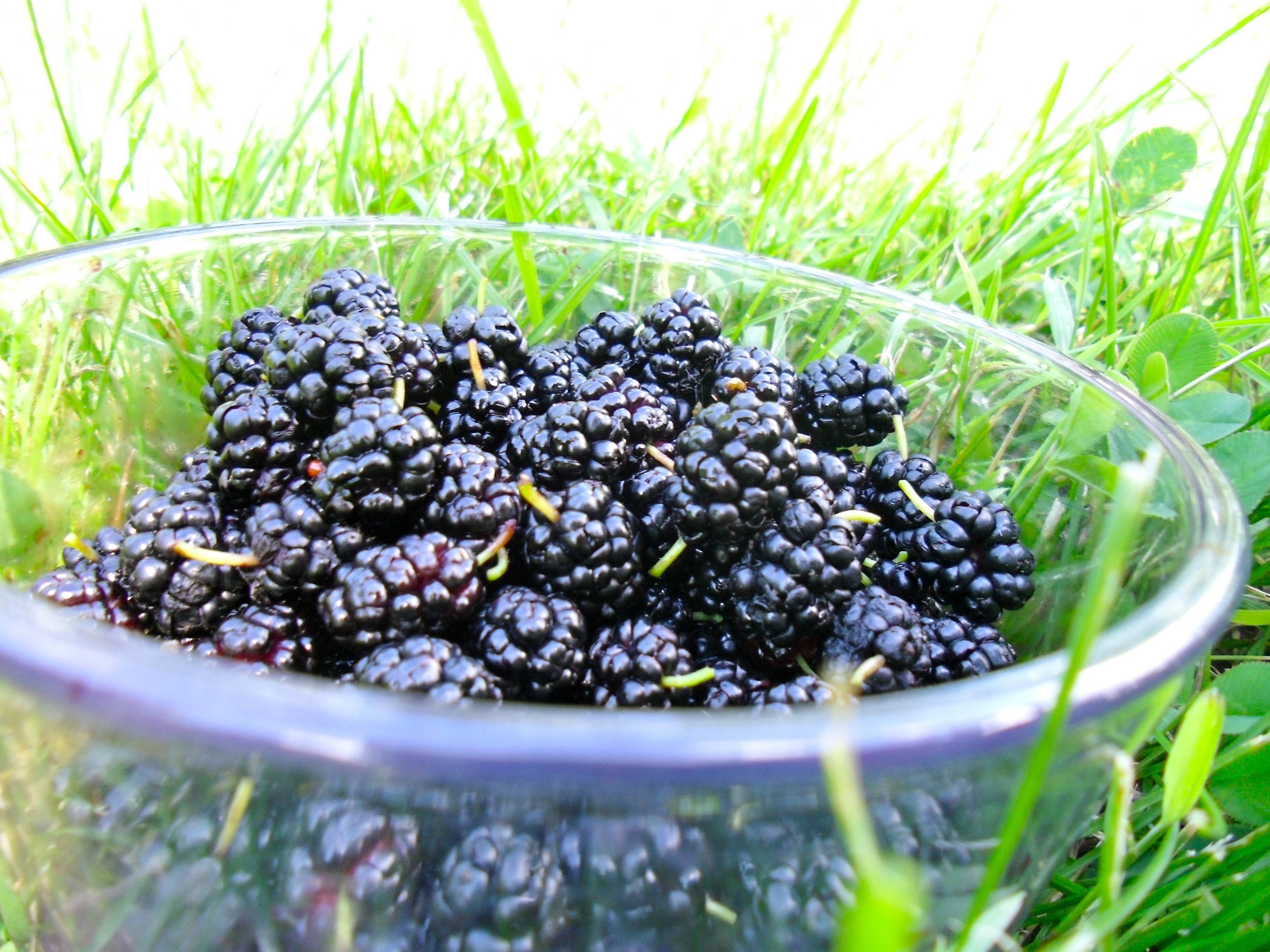Mulberries
I grew up picking black raspberries, and occasionally found interest in the deep purple gems hanging just overhead, yet it wasn’t until recently that I took a more serious look at these often unnoticed, untouched ‘beauts.’
There are two common mulberry tree species (plus many ‘off shoot’ hybrids) here in the U.S.—the native red mulberry and the Asian white mulberry. The red mulberry, which reaches a height of about sixty-five feet, has rough, reddish~brown bark and the leaves are rounded, toothed—some oval shaped and some lobed. The fruit, also oval in shape, hangs from a thin, green fruit stalk and is composed of many very dark purple berries (when ripe). Each little berry has its own seed. Red mulberry trees will be the ones that you are more likely to come across while foraging.
With the thought of beginning a silk industry in mind, white mulberry trees were imported from Asia during the 1800’s. Being too much work, this idea was quickly abandoned—though, not before this fertile tree swept its way across much of America. As the name implies, white mulberries are white with clearly visible black seeds in the center of each tiny berry.
It is not surprising to me at all that these little berries are being sold in stores as a superfood! As it turns out, mulberries mean biz~i~nass in the nutrition department. They are fairly high in protein. (One handful contains about 3 grams of protein. For comparison, bananas are about 4% protein and mulberries are about 11%.) They are a sweet source of vitamin C with about one handful (I don’t necessarily dig the counting game when it comes to food, but when I do dive into talk of measurements, it is usually by the ‘handful’;)…it would be about a 28-30 gram serving) containing around 130% of the recommended daily amount. They’re also a decent source of iron, calcium, magnesium, vitamin K, potassium and fiber.
Mulberries are a food that I most enjoy solo-style—still, I’ll post a recipe for a fantastic smoothie and mulberry crisp below……
Wild Mulberry & Celery Smoothie
- 1 cup wild mulberries
- 1 banana (omit if you have lower glycemic needs)
- 1/2 cup pineapple, chopped (again, lessen or leave out for less sugar)
- 1 cup nut or seed milk (hemp, almond, coconut milk, etc…)
- 3-4 stalks of celery
Blend until smooth & Enjoy!
Mulberry Crisp
Fruit Layer:
- 4 cups wild mulberries
- 1/4 cup fresh lemon juice
- 1 tablespoon arrowroot powder
- 2 teaspoons vanilla extract
- 1/2 teaspoon (about 1 dropperful) liquid stevia (or 1 tablespoon honey)
Crumble Topping:
- 3/4-1 cup coconut flour
- 4 tablespoons coconut oil or ghee
- 1 teaspoon vanilla extract
- 1 teaspoon ground cinnamon
- 1/2 teaspoon (1 dropperful) liquid stevia
- 1/2 teaspoon sea salt
(can add in ground nuts/seeds and/or oats……)
1. Preheat oven to 350 degrees.
2. Combine fruit layer ingredients in a bowl and then pour the mixture into a fitting casserole dish.
3. Combine the crumble topping ingredients (mix in coconut flour, slowly, until reach ‘crumble’ consistency~ evenly distribute crumble mixture on top of fruit layer.
4. Bake for 40 minutes.
(Serve hot or cold)
(organic lifestyle & village voice, 2011)


